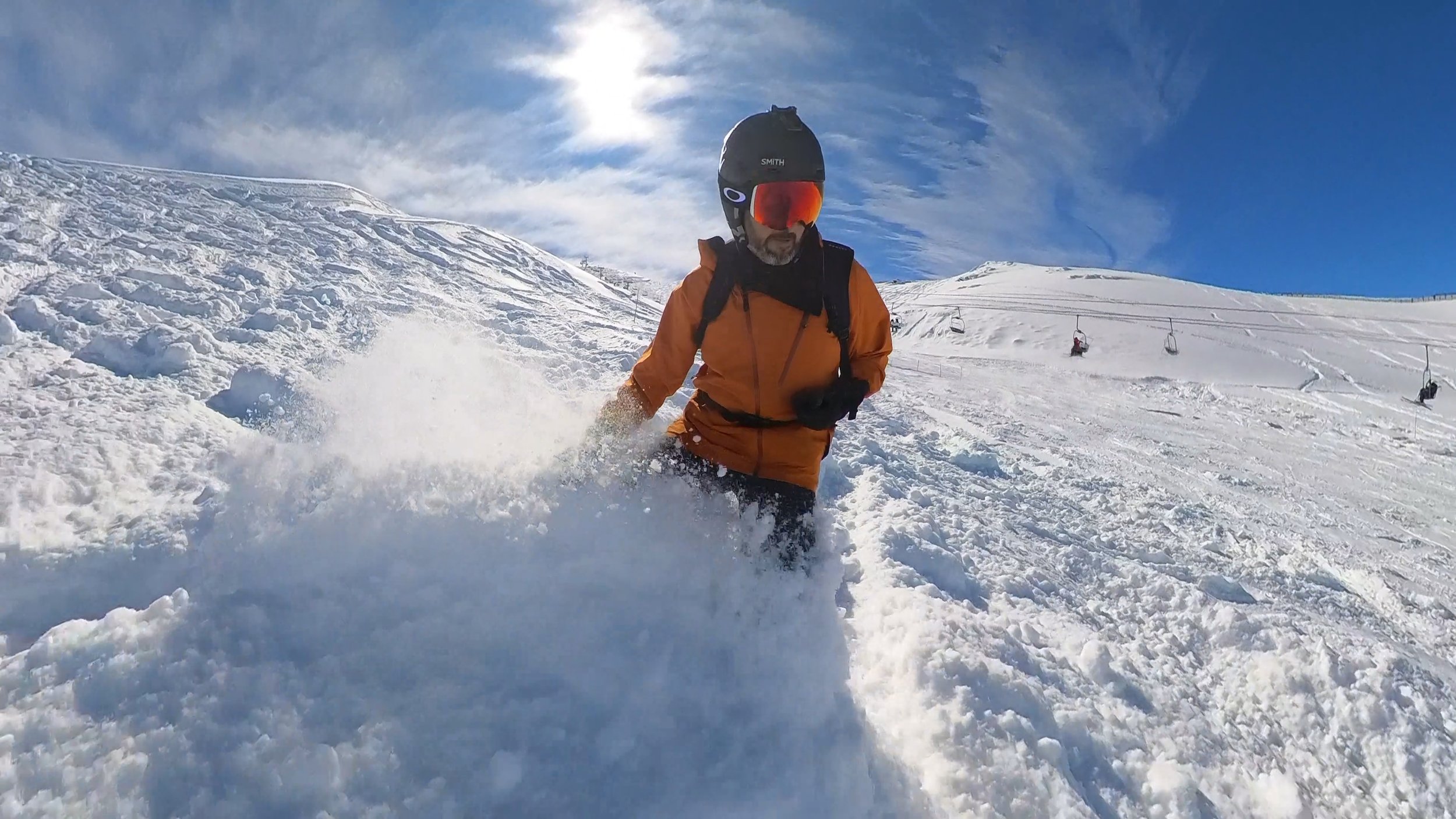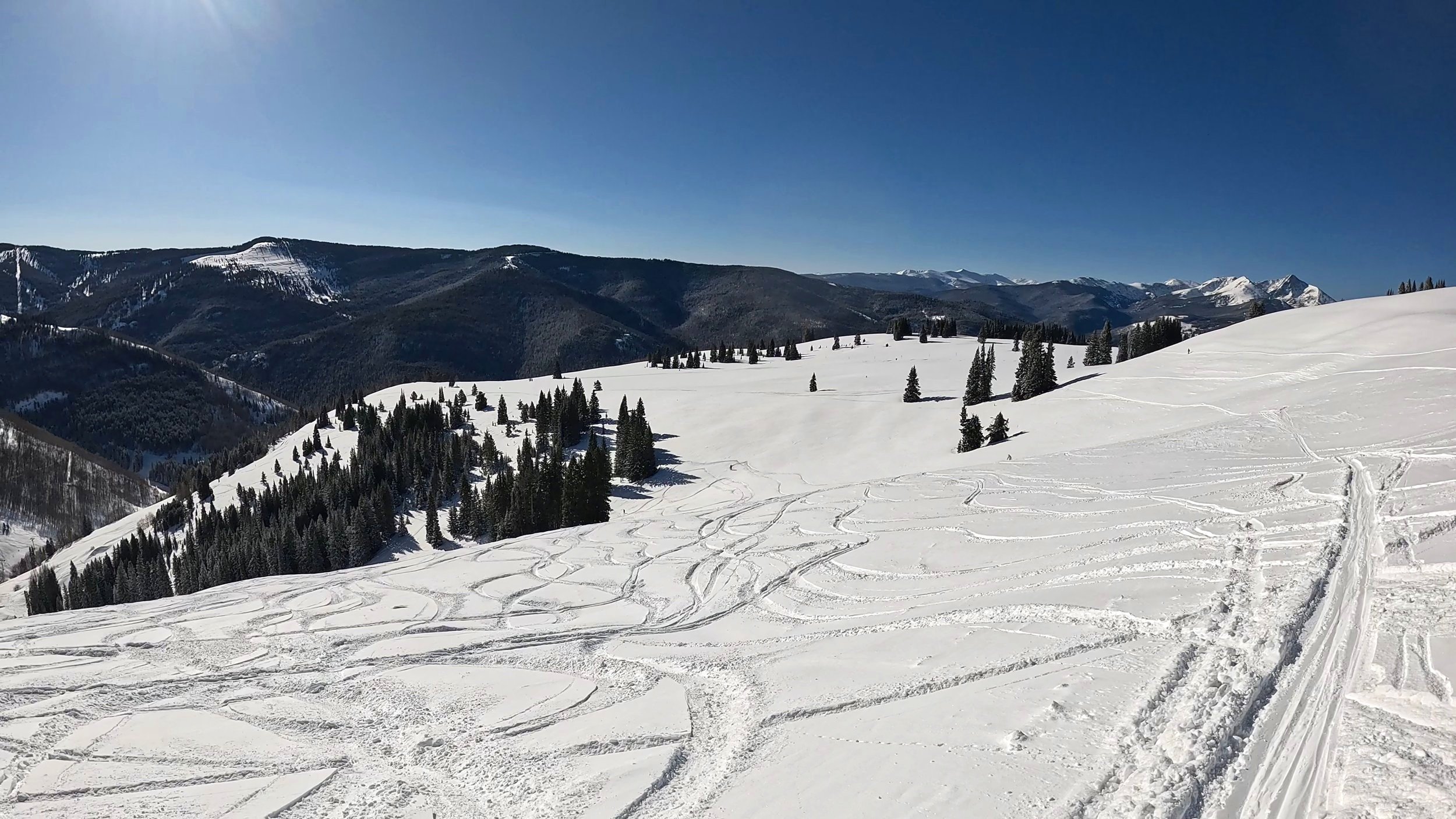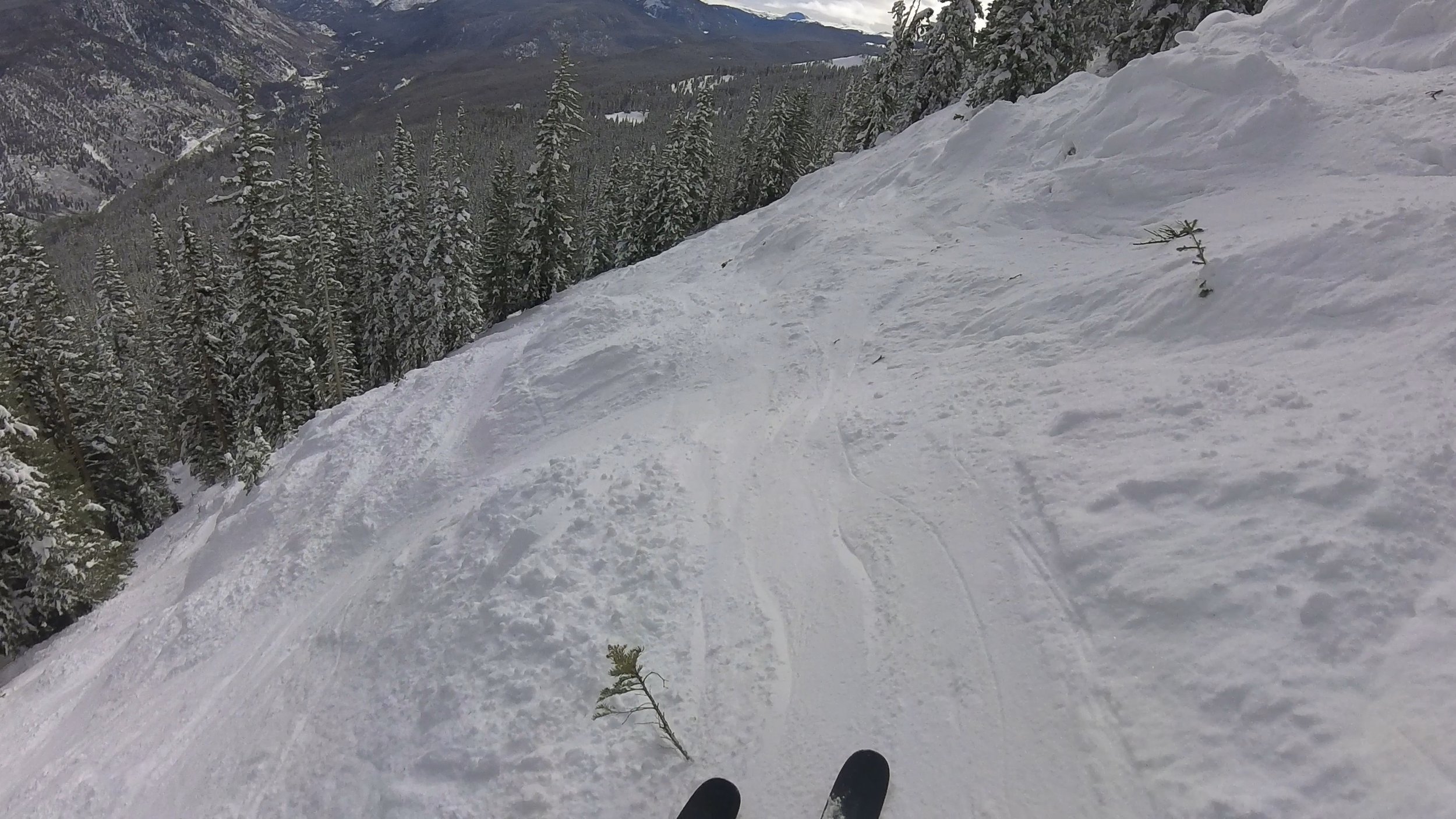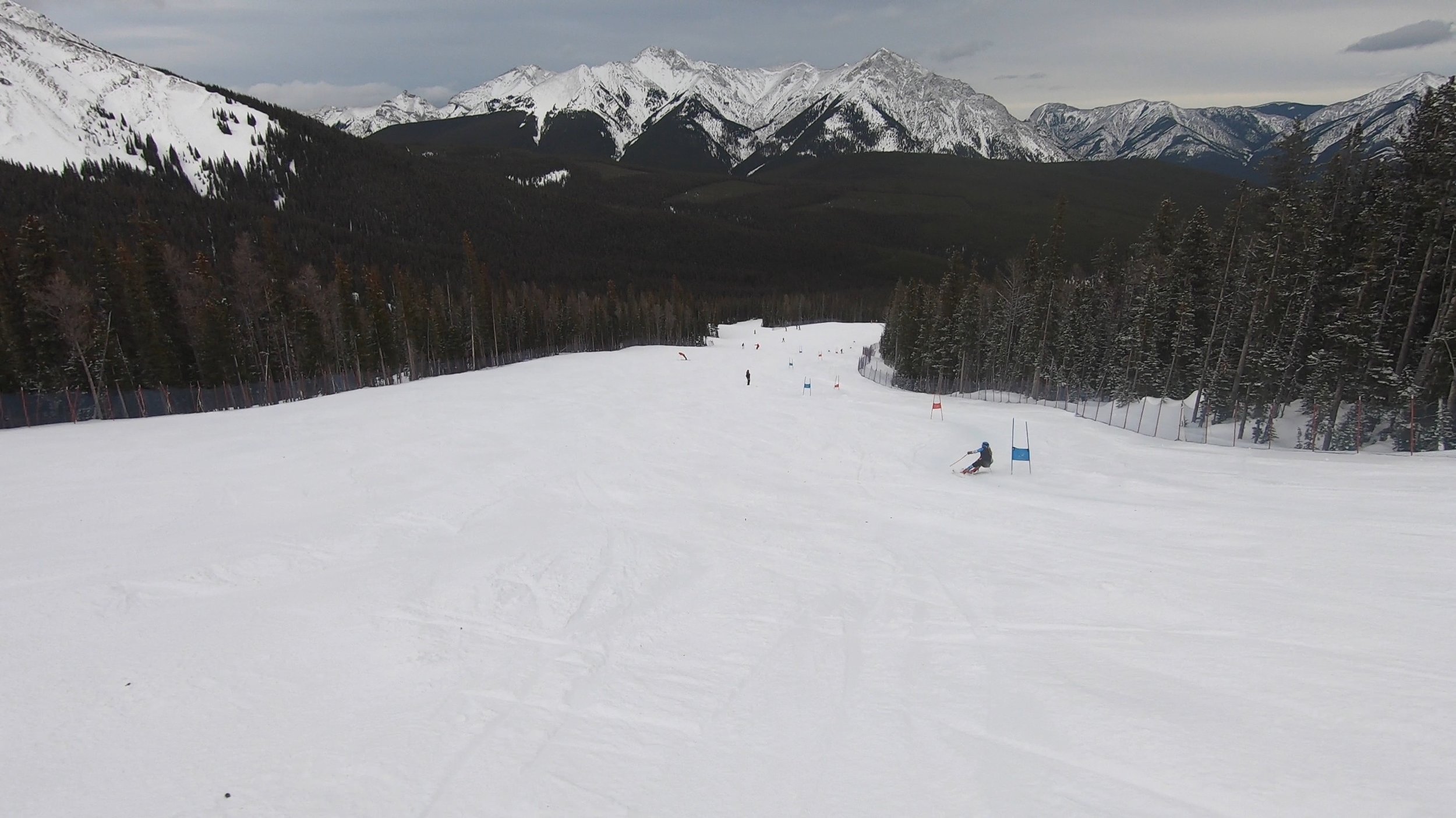Powder to Bare Ground: Ski Resort Conditions Ratings Explained
When you’re planning a ski trip, the first thing that probably comes to mind is snow. But while the slopes may look pretty similar on the surface, not all snow conditions are created equal. Depending on your destination or just the luck of the draw, you can encounter all sorts of conditions, spanning all the way from waist-deep powder to trails that are nearly dirt patches. So what are the different types of snow conditions you can encounter at a ski resort? And how can you tell what the conditions are going to be like? In this article, we’ll go through the different condition ratings that are widely recognized in snow reports, as well as what it means for you when you see this rating on your ski day.
Powder days can be some of the most fun times on the slopes, but how do you know when they come?
Rating System Origins
History of Reporting Snow Conditions
Before diving into the different types of snow conditions, it’s helpful to understand exactly what a snow report is and the history of how it came to be in its current form. Even when the sport of skiing first took hold in the Northern Hemisphere in the early 20th century, it was clear that snow conditions, weather, and trail open statuses would vary depending on the day—and that there was a need to convey this information not just for safety reasons, but also to attract tourists. Initially, these reports came through daily radio announcements, paper pamphlets, and word of mouth—but as time and technology progressed, they eventually moved onto digital, online-accessible reports. In today’s world, most ski resorts provide real-time conditions updates, making it possible to understand the conditions at a mountain on a live basis.
Primary vs. Secondary Surface Conditions
Rather than providing just one condition rating for the slopes, North American snow reports often have two ratings: primary and secondary surface conditions. Primary condition reports give the reader a sense of the most common snow condition, while secondary condition reports give the reader a sense of conditions that may be found on a significant minority of slopes. If conditions are extremely consistent across the whole mountain, primary and secondary condition statuses may be the same, or a secondary surface may be omitted altogether. This report structure has helped skiers and riders quickly pinpoint essential condition information on the mountains for decades.
Powder
(Condition Code: P)
So with that out of the way, what are the different ratings you'll see on snow reports, and how do you read them? Well, let’s start with what’s arguably the most favorable: "Powder." If you were to ask the majority of skiers and riders what their favorite type of snow condition is, they would probably say it’s this one. Seeing powder as the primary surface condition in a snow report typically means a significant amount of recent snowfall, typically within the last 24 hours, and snow conditions that allow for deep turns and supremely smooth gliding. An untracked powder run is like hitting the jackpot, with conditions that often feel like you’re floating on top of the snow.
So why are powder conditions so great? Well, powder is made of loose ice crystals that are lightly compacted together, which provides a friction that denser conditions don’t—and in the process, makes skiing or riding on this surface so floaty and forgiving. For many experienced winter sports enthusiasts, the airy and even pillowy consistency of the best powder allows for confidently tackling aggressive slopes with significantly less consequence than in typical conditions. Ever seen any extreme skiing videos on YouTube? Chances are the athletes waited for this type of condition to attempt their lines.
With this all being said, powder consistency often does vary by region. While conditions might be light and dry in some areas, powder can also be wet and heavy, with the outside temperatures and humidity of the air playing a significant impact on the quality. Wetter and heavier storms tend to take quite a bit more effort to ski or ride through than their drier and lighter counterparts, and as a result, are often less enjoyable. Some resorts do use a distinct “Wet Powder” rating to distinguish heavier-consistency snowfall, but unfortunately, this is not universally the case, and resorts often only convey whether the powder is present.
Not all powder is created equal, as wet, heavy snow such as that found at Whistler Blackcomb can make turning difficult for less experienced guests.
While powder is often an experienced skier or rider’s dream, it can be quite difficult to ski through as a beginner—no matter the snow-to-liquid ratio of the accumulation. This type of condition requires substantial energy exertion compared to a traditionally maintained ski slope, and to make matters even worse, the thin, heavy skis that come with a standard beginner rental package are just about the worst skis out there for floating in powder. In fact, rental shops will often have beginners returning their equipment earlier on powder days than in any other condition due to these circumstances. For those unfamiliar with these types of conditions, it may be worth picking up some wider and softer skis to make it easier to turn in deep snow, and perhaps taking a lesson as well. But while these conditions can be uncomfortable at first, they’re still among the safest and most forgiving to learn in—and once you get the hang of it, it’s hard to give up the thrill of skiing or riding conditions like this.
Where to Find Powder
In North America, powder is most commonly found in the Rockies, the West, and occasionally in parts of the Northeast. Unfortunately for those in the Mid-Atlantic and Midwest, powder is rare due to limited natural snowfall—but it’s not completely out of the question. In general, the best time to score powder conditions is from January through March, but the best snow periods do depend on region, and some areas, particularly those in the US and Canadian Rocky Mountains, regularly offer powder conditions as early as November or as late as May. Here’s a rule of thumb: if you see powder conditions on your snow report, get on the mountain early—as the truly good snow can be gone within only a few hours at popular mountains.
Rocky Mountain resorts, such as Aspen Mountain, are known for great snow retention, making for great packed powder conditions.
Packed Powder
(Condition Code: PP)
If it’s snowed recently but fresh tracks have already been taken, the condition rating you’re likely to find on your snow report is “Packed Powder.” Packed powder occurs when fresh snow has been groomed or “packed”, creating a much more stable and consistent surface than the light conditions of true powder. Skiers and riders who find themselves in this type of condition will find compact but soft snow conditions, allowing for smoother turns and better control at higher speeds, making these circumstances great for carving on groomers. The more forgiving state of affairs under packed powder creates ideal conditions for beginners still getting their bearings on top of the snow, as well as for cautious skiers and riders who prefer effortless cruising to the more deliberate form required for true powder. Packed powder conditions are either produced by grooming machines or natural skier traffic in the aftermath of a strong snow event.
Where to Find Packed Powder
Resorts in the Rocky Mountains are renowned for their packed powder thanks to excellent snowfall and ample resources to maintain their mountains, but this condition also regularly occurs on the West Coast as well as in parts of the Northeast. As with powder conditions, true packed powder is a bit rarer in the Midwest and the Mid-Atlantic, but it can actually occur quite regularly as a secondary surface at certain resorts thanks to extensive snowmaking operations. Also as with powder conditions, the best time to find packed powder conditions is between January and March, although resorts with strong snowmaking or snow farming often achieve this condition by late December.
Before we move on, one quick thing to watch out for on the “packed powder” status: some ski resorts stretch the use of this term a bit, applying it even after snow conditions have deteriorated past the light, soft snow from a fresh storm. When this happens, guests may experience snow conditions that are harder and less forgiving than that of true packed powder. If you’re unsure of the exact threshold your resort has for this term, it’s helpful to check recent snowfall and weather conditions—if it’s been above freezing since the last snow event, there’s a chance the packed powder status you’re seeing on your snow report is a bit of an exaggeration.
Machine groomed runs are some of the most common, and much of the skier traffic will be found here, though that isn’t the case on this run at Verbier, Switzerland.
Machine Groomed
(Condition Code: MG)
If it hasn’t snowed within the last few days but your resort takes its on-mountain maintenance seriously, chances are that the mountain’s surface condition will be “machine groomed.” Groomed conditions, otherwise informally known as “corduroy” thanks to the lined pattern made by snowcats, are arguably the easiest to ski or ride at a resort—and this condition often makes its appearance as a primary surface status when the mountain has compacted the majority of its runs with a snowcat. The smooth and flat slopes of groomers lead to strong edge control, which allows skiers and riders to build up serious speed and carve sharp, wide turns. Groomed conditions are often also easier on the legs than other types of skiing conditions, making them perfect for those looking for an easygoing downhill journey.
But wait a minute, you might be asking, shouldn’t machine groomed surface conditions fall under the “packed powder” status? Well, not exactly—if your resort hasn’t just had a fresh bout of snow, there won’t be any powder to pack, and a machine groomed surface will often be harder than that of a surface that most would consider packed powder. In that vein, the “machine groomed” surface status is a lot broader than the other conditions we’ve covered so far, and it can cover snow conditions ranging from decent to mediocre, so long as the snow is spread out by a groomer. While some resorts may use the machine groomed status to advertise that they’ve groomed most of their runs, others will use it to convey that the groomers are the only feasible trails to ski or ride at the resort.
Where to Find Machine Groomed Conditions
Groomed conditions can be found at resorts across all major ski regions, with only an extreme minority of mountains never grooming their slopes. At typical resorts, groomed conditions can be found all the way from the start to the end of the core ski season and are almost the default surface condition on many snow reports. If your mountain’s primary surface condition is groomed, the best time to get out there is in the morning, when there are the fewest tracks, as slopes can get skied out.
Hard Pack snow is some of the fastest you’ll find, and many race courses, such as this one at Nakiska, become hard pack after a few racers
Hard Pack
(Condition Code: HP)
Next up, we move to the first surface condition that you’ll find under unfavorable weather conditions: “Hard Pack.” Hard-packed snow is one of the reasons recreational skiers and riders often decide to wait until later in the day to hit the mountain. When the snow has been continuously groomed to the point of losing its softness—or prolonged wind exposure has blown any remaining powder away—it’s fairly likely that slopes will consist of hard-packed snow. This type of surface is softer than ice but harder than packed powder.
When conditions are particularly hard but not quite ice, some ski resorts will use the term “Frozen Granular” as the surface rating. Although they feel similar, frozen granular snow and hard pack are technically distinct. Frozen granular forms from snow that has melted and refrozen after rain or above-freezing temperatures, while hard pack, in the strictest sense, has never actually melted. If the temperature was recently above freezing or it recently rained on the mountain, there’s a good chance your day will consist of frozen granular snow. The cycle of the melting and then refreezing of the snow solidifies the snow in a more firm manner than fresh or packed powder, but one that is still suitable to ski.
The harder consistency of hard pack and frozen granular snow creates the fastest snow on the mountain and is used for races—and some serious speed enthusiasts may prefer it as a result. But most casual skiers and riders will not find this type of slope enjoyable—especially in a steep setting—as it can be very slippery and unforgiving. Many injuries occur on this type of surface due to how hard it is and the difficulty of regaining an edge in the event of a slip-up.
Where to Find Hard Pack Conditions
The “Hard Pack” and “Frozen Granular” condition ratings are most common in the spring in the Rocky Mountains and year-long on the East and West Coasts. If you see this type of condition in your mountain’s snow report, check if it’s sunny out. If it is, you may want to wait until later in the day and ski where the sun has been, which will make the surface softer.
Bare spots, such as this extreme example from Tenney Mountain in New Hampshire, can be common after snow droughts or higher temperatures
Variable
(Condition Code: V)
But the condition you really don’t want to see on your snow report is “Variable”. For most skiers or riders, seeing variable conditions on a weather report means questioning whether to even go out or not. Variable snow conditions can be a result of low snowfall, temperature changes, and limited mountain services like grooming, leading to the development of a wide range of unenjoyable snow conditions.
The variable condition rating can encompass a range of different snow surfaces, and some resorts are more prescriptive in exactly what they mean than others. More specific ratings you might see on a snow report include “Loose Granular”, which basically means the surface is made of small ice pellets that are nearly impossible to hold an edge on, “Thin Cover” or “Bare Spots”, which mean that trails have areas of exposed, unskiable cover, and “Ice Patches” or “Ice”, which conveys that part or all of the mountain is covered in a hard glaze that’s nearly impossible to maintain control on. Sometimes, resorts will just use the variable rating when the conditions are so uneven across the mountain that no true primary surface condition can be determined.
Where to Find Variable Conditions
In the unlikely event you happen to be looking for variable conditions, they’re most commonly found in the Midwest, Mid-Atlantic, and parts of the Northeast. However, they can be possible anywhere there is a snow drought. The temperature can also dictate variable conditions, with abnormally above-freezing temperatures or long periods without a freeze event causing snow surfaces to substantially degrade. To avoid variable conditions, plan trips to areas with heavy snowfall or well-maintained mountains during the core winter season, which typically ranges between January and March in most North American regions. You're more likely to encounter variable conditions at local East Coast mountains like Hunter compared to larger resorts like Vail.
Deep bases and bare spots off the slope are common sights in the early season.
Artificial or Early Season
(Condition Code: A / ES)
But sometimes, you may end up in situations where there’s no natural snow at all. In the early parts of the ski season, one can experience a mountain that’s held down exclusively by man-made snow—hence the “artificial” conditions rating.
While some sort of natural snowpack may still be present, the snow under conditions like these will likely only consist of a thin base layer and many hazards. The man-made snow may make for reliable snow cover in some areas, but others may be bare enough to include roots, rocks, and plants on the way down. Unlike spring skiing, you want to avoid slushy areas as they contain most of the hazards.
But while thin cover is often an issue with artificial snow, it does create a more efficient and reliable base than exclusively natural snow cover. Once there’s enough of a layer, man-made snow is often groomed, which does provide a layer of security that’s not always present under hard-pack or variable conditions, although these resort operations can’t always cover up some of the obstacles we mentioned earlier.
Where to Find Artificial Conditions
Artificial conditions are most likely to occur during the earliest months of the season, typically in November and December. However, in low-snow regions such as the Midwest and Mid-Atlantic, this condition rating can make its way onto reports throughout the entire season. To avoid artificial conditions, keep an eye on snow or mountain reports or just wait until January.
Soft snow and sunny days are often found in the spring, especially at resorts like Palisades Tahoe that push the season as late as they can
Late Season or “Spring Skiing” Conditions
(Condition Code: SC)
But while ski resort snow conditions can reach abnormally low levels during the early months, the same can be said for the season end period. Most resorts have special snow report ratings for the last weeks of the season, including “spring skiing”, “corn”, or “slush” surface conditions.
As the season transitions from winter to spring, the higher temperatures typically change snow conditions from deep powder and hard pack to soft corn snow. The snow you will experience is unlike powder or hard pack surface conditions, but rather closely resembles the feeling of very soft packed powder. However, spring conditions can bring a range of different snow textures, with mornings often being quite firm, and things getting softer and softer as the afternoon progresses.
Corn Snow
Short of a miracle powder day, corn snow is the best snow you’ll encounter in spring. It can be described as smooth and soft while still giving the skier a feeling of security—as the snow also has a strong grip. This snow is created through the process of melting and freezing many times over to get a corn like texture. Given the rapidly changing conditions throughout a typical spring day, the best time to find corn skiing if your mountain’s snow report notes spring conditions is in the late morning, before conditions get too slushy.
Slush
Speaking of slush, this is the type of spring skiing you may want to avoid. Slushy conditions are wet and heavy to navigate, making for slow and arduous conditions. In the event that certain parts of the resort have been in the sun while others have been in the shade, conditions like this can result in sudden changes in friction, making it easy to lose your balance and frankly scary at times. Sometimes, snow reports will distinguish between corn and slush surface conditions, but this isn’t always the case, especially when conditions can change on an hour-to-hour basis.
Where to Find Spring Skiing
To enjoy the spring ski season, the best time to go is between late March to early May. Given the often-unforgiving icy mornings and slushy afternoons, the best time to go out is usually the late morning and early afternoon. Ironically, spring skiing can make for some of the best ungroomed slope conditions of the year, with the softer snow making moguls much easier and more enjoyable to navigate than in typical conditions (although they also build up faster).
By nature of their very long seasons thanks to heavy snowpacks, mountains located on the West Coast are most likely to operate under spring conditions. However, most mountains throughout North America offer spring conditions in the weeks before closing. The short skiing and riding window and high temperatures during spring skiing conditions have fostered a special on-mountain culture during this time, and those visiting in the spring will often catch parties, tailgates, and other special events.
Ski resort conditions reports can be useful guides to help you plan your ski day—but they can also be somewhat deceptive in their surface ratings.
Final Thoughts
So that’s our breakdown of the major snow conditions you can expect to see on a ski resort snow report. Some conditions are clearly superior to others, but the main power of the snow report is in providing detailed information for guests to come appropriately prepared for the day’s conditions, and in understanding each of these ratings, one can arrive at the slopes fully confident in what they’ll be tackling. Not every day is going to be a powder day, but every open ski day is going to have some sort of conditions, and it turns out it’s not just up to your instinct to figure out what they are.
Can you trust ski resort snow reports?
So now that you have a baseline understanding of snow conditions ratings, you might be wondering: can you actually trust the snow reports? Well, while they are helpful guides, ski resorts use their conditions reports as marketing materials as well, and they can be deceptive in their surface ratings. It’s rare that the conditions reports don’t have at least some element of truth to them, but if you’re unsure how much the surface conditions claims hold up to reality, there are fortunately ways you check for yourself. Third party apps like OpenSnow offer a more detailed breakdown on recent snowfall, temperature, and weather trends. Locals are also great sources to question, as they understand the mountain and local snow conditions better than typical visitors—and they won’t give you the sugarcoated answers that some mountain staff would.
What did you think about this article? Any snow report conditions that we missed or might have changed? We’d love to hear from you, so let us know your thoughts in the comments below.










